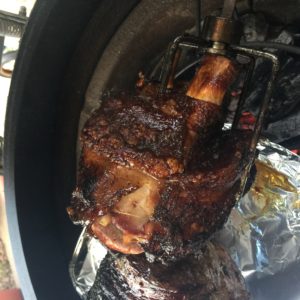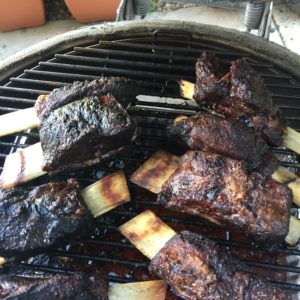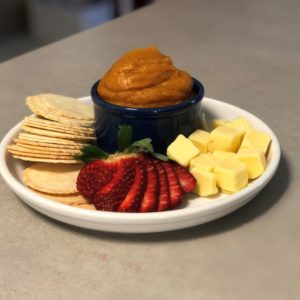The Ancient Art of Kamado Cooking: A Journey Through Time
Kamado cooking has a long and rich history that dates back to ancient Japan. The word “kamado” is a Japanese term that translates to “place for the cauldron,” and it refers to a traditional earthenware cooking vessel. These vessels were used for cooking and baking and were made from clay. They were designed to be heated by charcoal and were known for their ability to retain heat and maintain a consistent temperature. This made them ideal for slow-cooking meats and vegetables, as well as for smoking and grilling.
The origins of kamado cooking can be traced back to the Jomon period in Japan (14,000-300 BCE). During this time, the Jomon people used clay vessels for cooking and heating. These vessels were similar in design to the modern kamado grill, and they were heated by burning wood or charcoal. The Jomon people also used these vessels for baking, and they made a type of bread called “Jomon-pan,” which was similar to modern-day flatbread.
During the Kofun period (300-710 CE), the use of kamado-style cooking vessels became more widespread in Japan. The Kofun people were skilled ceramists, and they began to make kamado-style vessels from a variety of materials, including clay, pottery, and even metal. These vessels were used for cooking and heating, and they were also used in religious ceremonies and rituals. The Kofun people also developed new techniques for making kamado-style vessels, such as the use of different clays and glazes.
The Heian period (794-1185) saw the development of new types of kamado-style cooking vessels. The Heian people began to make kamado-style vessels from a type of clay called “shigaraki-yaki,” which is known for its ability to retain heat. They also began to make kamado-style vessels with lids, which allowed them to be used for steaming and boiling. The Heian people also began to use kamado-style vessels for cooking a type of food called “dengaku,” which is a dish made from skewered meats and vegetables that are grilled over charcoal.
During the Edo period (1603-1868), kamado-style cooking vessels became even more popular in Japan. The Edo people began to make kamado-style vessels from a type of clay called “Iga-yaki,” which is known for its ability to retain heat and for its durability. They also began to make kamado-style vessels in a variety of sizes, from small vessels that were used for cooking at home to large vessels that were used in public places such as temples and shrines. The Edo people also began to use kamado-style vessels for cooking a type of food called “yakitori,” which is skewered chicken that is grilled over charcoal.
The modern era has seen the Kamado style grill evolve and adapt to new materials such as ceramic, metal, and ceramics-coated metal. This has allowed manufacturers to create grills that are more durable and heat efficient. They are also able to produce grills in various sizes, making them suitable for both residential and commercial use. Additionally, the kamado style grill has gained popularity in recent years due to its versatility, and ability to produce delicious, smoky-flavored food.
Today, kamado-style cooking is enjoyed by people all over the world. Kamado-style grills are used for cooking and grilling a wide variety
of foods, from meats and vegetables to seafood and even desserts. They are also used for smoking, roasting, and baking, making them a versatile cooking option for any occasion.
One of the key characteristics of kamado-style grills is their ability to retain heat and maintain a consistent temperature. This is achieved through the use of thick walls and tight-fitting lids, which help to trap heat and smoke inside the grill. This allows for low-and-slow cooking, which is essential for achieving the delicious smoky flavor that is associated with kamado-style cooking.
Another important feature of kamado-style grills is their ability to control the airflow. This is achieved through the use of vents and dampers, which allow the cook to regulate the amount of oxygen that enters the grill. This is important for controlling the temperature and for maintaining a consistent cooking environment.
In addition to its versatility and ability to retain heat, kamado-style grills are also known for their durability. Many modern kamado-style grills are made from ceramic or ceramics-coated metal, which are both extremely durable and heat-resistant materials. This makes them ideal for outdoor cooking and allows them to be used year-round, regardless of the weather.
Kamado-style grills have also been embraced by the competitive barbecue community, where they are used to smoke meats for hours to achieve the perfect flavor. Many pitmasters and barbecue enthusiasts have adopted the kamado-style grill for its ability to produce the perfect smoke ring, and for its ability to hold low and steady temperatures for long periods of time.
In recent years, the popularity of kamado-style grills has grown rapidly, thanks in part to the rise of food and cooking shows on television. Many of these shows feature celebrity chefs and pitmasters who showcase the versatility and delicious results that can be achieved with a kamado-style grill.
In conclusion, the history of kamado cooking is a long and rich one that spans centuries and cultures. From ancient Japan to modern-day backyard BBQs, kamado-style grills have proven to be a versatile and durable cooking option that can produce delicious, smoky-flavored food. Their ability to retain heat, maintain a consistent temperature, and control airflow, make them a favorite among pitmasters, chefs and backyard enthusiasts. With their growing popularity, it’s clear that the ancient art of kamado cooking will continue to be enjoyed for many years to come.




